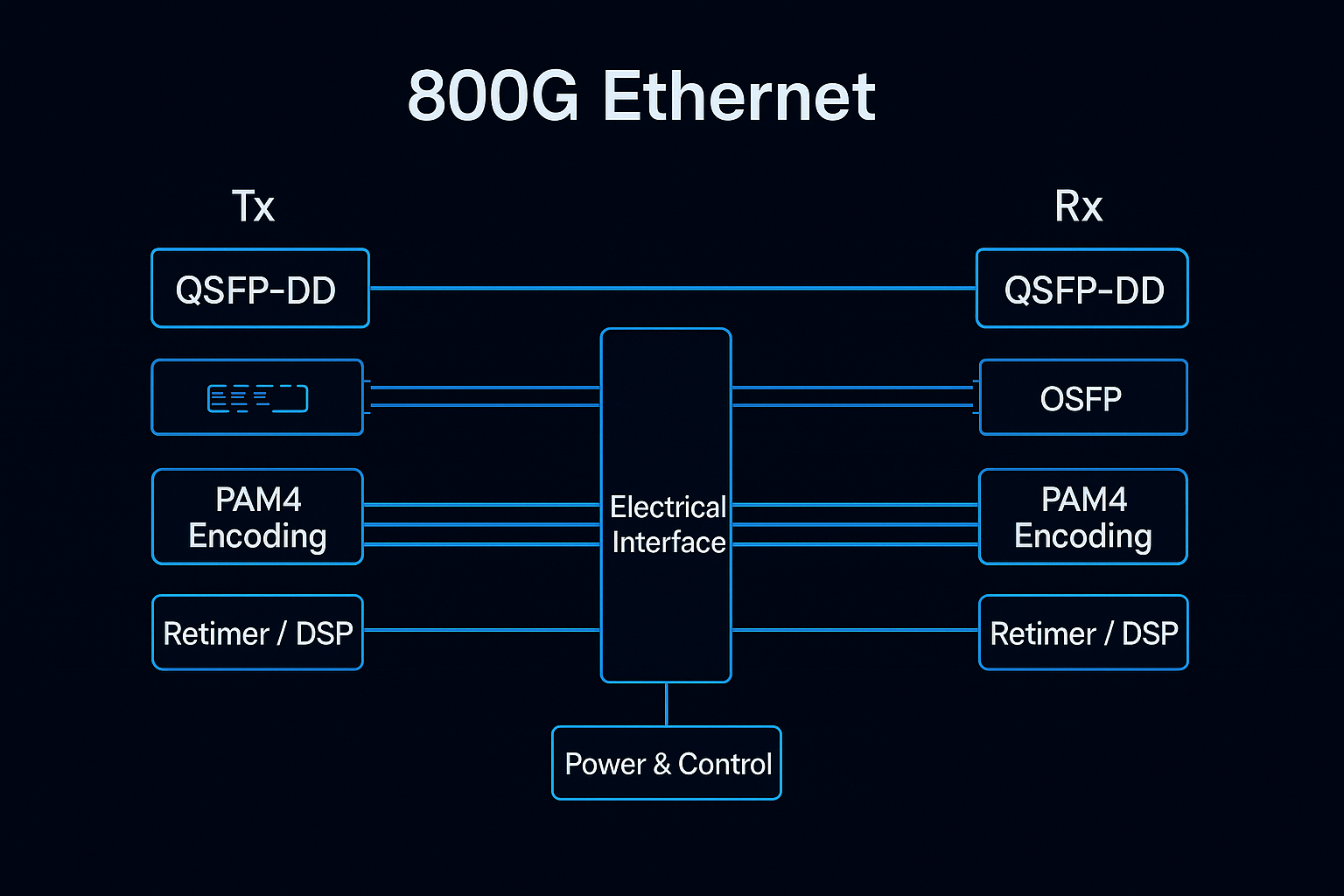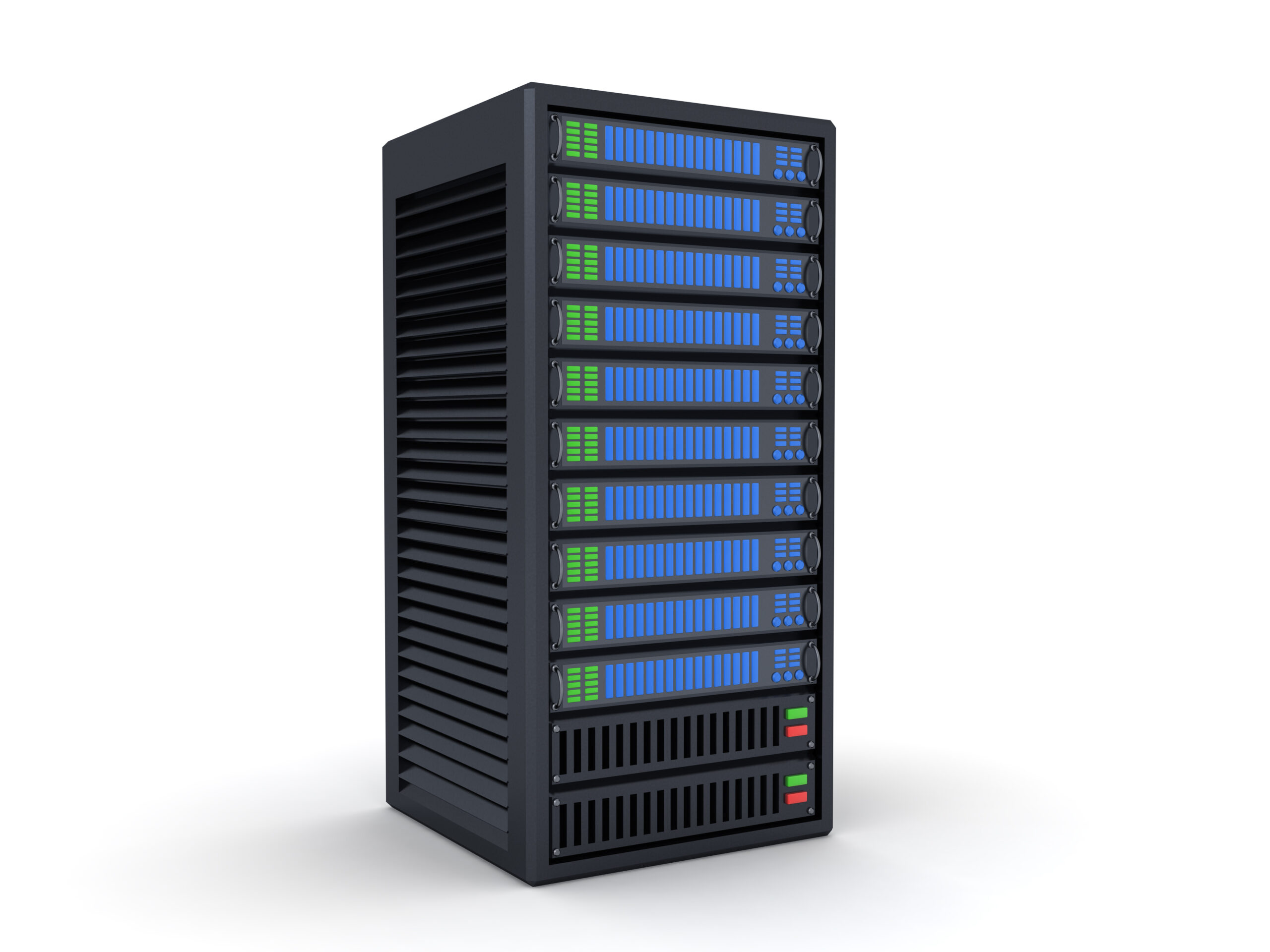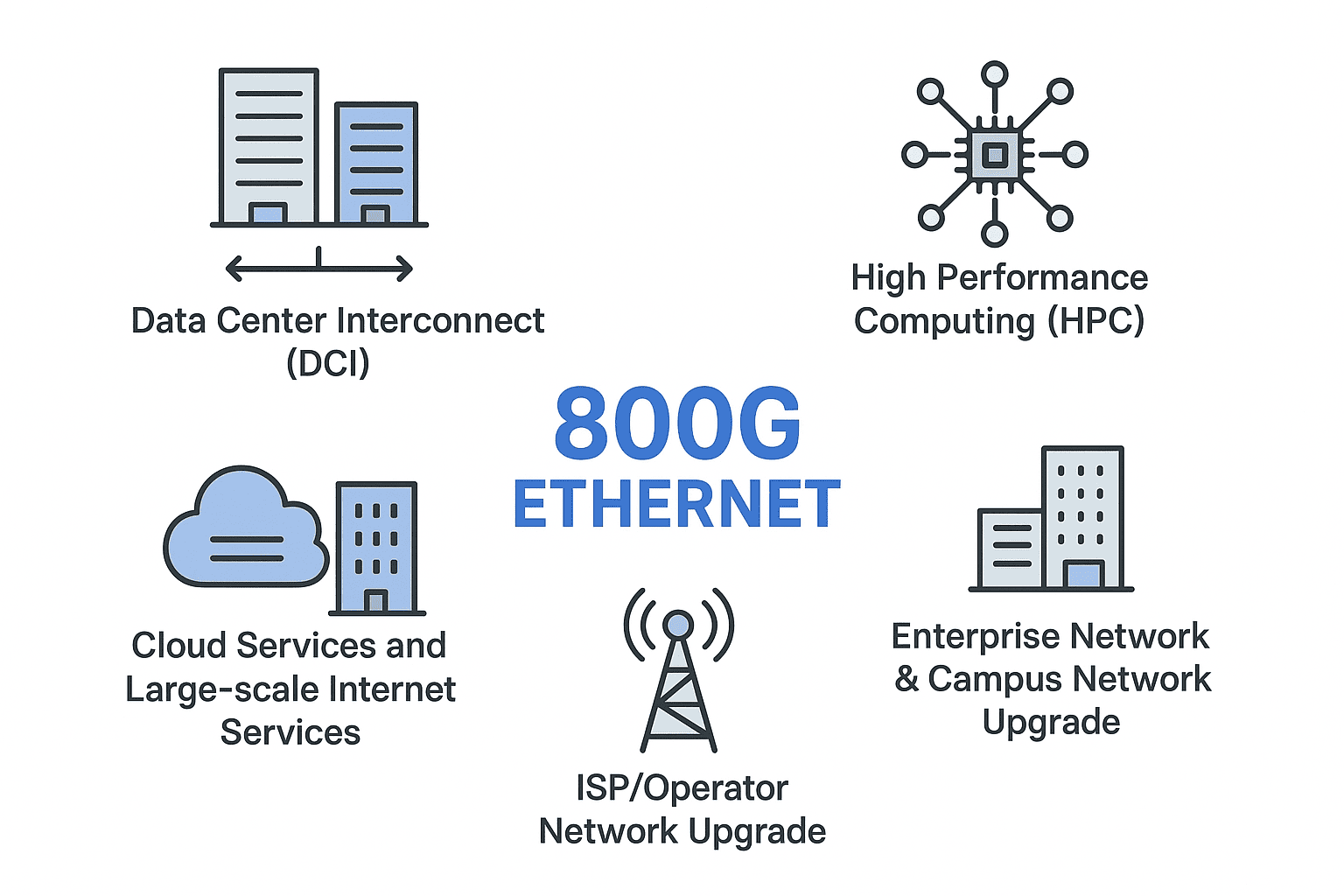With the rapid development of cloud computing, artificial intelligence (AI), big data analytics, and high-speed interconnected applications, global data traffic is growing at an unprecedented rate. Although 400G Ethernet has become the mainstream in data centers, it is gradually approaching its limits under the bandwidth demands of AI training clusters, hyperscale cloud services, and high-performance computing.
To address this trend, the industry has introduced the 800G Ethernet standard. It is based on advanced PAM4 modulation, DSP chips, and silicon photonics technology, achieving a balance between power consumption, transmission efficiency, and cost, laying the foundation for the next generation of high-bandwidth, low-latency intelligent networks. As a key transitional stage from 400G to 1.6T, 800G Ethernet not only represents a leap in speed but also serves as a milestone for the comprehensive upgrade of data center architecture and the communication ecosystem.

800G Ethernet is an extension and upgrade of 400G technology.It typically uses eight 106 Gbps channels (8×PAM4) to achieve a total data rate of 800 Gbps. It also introduces new MAC (Media Access Control) and PCS (Physical Coding Sublayer) specifications. The main standards include:
800GBASE-R: Defines the physical layer foundation for 800G networks, implemented using 106.25 Gbps lanes. The Ethernet Technology Consortium (formerly known as the 25G Ethernet Consortium) released the 800G specification draft in 2021, emphasizing compatibility with existing 400G PCS. The IEEE standards organization is also promoting related developments, expected to launch higher-speed Ethernet versions every 7-8 years, with 800G being the milestone following 400G.
Compared to 400G Ethernet, 800G provides double the bandwidth while maintaining lower power consumption and higher density, supporting longer transmission distances (via optical modules such as QSFP-DD or OSFP).

800G Ethernet, as the next-generation high-speed network technology, provides significant improvements compared to previous generations (such as 400G), with key advantages reflected in bandwidth, performance, cost, and application scalability. Below are its main advantages:
800G Ethernet supports a transmission rate of 800 gigabits per second (Gbps), which is twice that of 400G, achieved through 8 channels of 100Gbps, capable of handling massive data traffic and meeting the demands of AI, cloud computing, and high-performance computing. This makes it particularly efficient in hyperscale data centers, supporting faster data exchange and lower latency.
It optimizes large-scale computing environments, such as AI training and machine learning, enabling connections to more accelerators (such as GPUs) and providing higher data density and processing capabilities, driving advancements in high-performance computing (HPC). For example, in AI clusters, it can achieve end-to-end high-speed interconnections, significantly improving overall system efficiency.
Through higher port density and integrated design, 800G Ethernet reduces the number of devices and wiring complexity, lowering the total cost of ownership (TCO). At the same time, it optimizes power consumption while maintaining high performance, especially with the support of silicon photonics and co-packaged optics (CPO) technologies, achieving lower energy usage. This helps data centers achieve sustainable development and expansion without large-scale infrastructure modifications.
As a bridge to 1.6T Ethernet, it is compatible with existing standards (such as IEEE and Ethernet Technology Consortium specifications), facilitating smooth upgrades to current networks. Additionally, it supports longer transmission distances and various module forms (such as OSFP, QSFP-DD), suitable for data center interconnect (DCI) and telecom backbone networks, providing scalable future-proof solutions.
Overall, the advantages of 800G Ethernet lie in addressing the challenges of explosive data growth while enhancing network efficiency and reliability, and it has been widely adopted in large cloud providers and enterprise data centers.
Leveraging these technological advantages, 800G Ethernet is becoming a key direction for data center network upgrades. To meet the industry’s demand for high-speed interconnections, AscentOptics has launched a complete 800G product portfolio, helping customers build high-performance, low-power intelligent network infrastructure.
The products cover the 800G QSFP-DD and 800G OSFP series, supporting PAM4 modulation, low-power DSP, and various transmission distances (from short-range data center interconnections to long-range metropolitan network transmissions). These modules are compatible with mainstream switch chip platforms (such as NVIDIA, Broadcom, Cisco, etc.), providing customers with highly reliable and scalable 800G network solutions.

The 800G Ethernet architecture builds upon 400G/200G designs, focusing on high bandwidth, low latency, scalability, and energy efficiency.
A typical 800G network is structured into layers:
Top-of-Rack (ToR) switches: Connect servers and storage within the rack.
Aggregation/Leaf layer: Aggregate traffic from multiple racks and manage east-west data flow.
Spine/Core layer: Carry data center backbone traffic, interconnecting multiple leaf switches at high speed.
Optical interconnect layer (Interconnect & DCI): Connects racks, data halls, or data centers, using ZR/ZR+ optical modules for long distances.
Within data centers, 800G Ethernet interconnect typically includes:
Server-to-ToR links: Using 800G QSFP-DD/OSFP transceivers or AOC/DAC cables for low latency and high throughput.
ToR-to-Leaf/Aggregation links: Single or aggregated 800G links for high-speed rack-to-rack connectivity.
Leaf-to-Spine/Core links: Multiple 800G links aggregated to provide non-blocking backbone switching.
Inter-data center links: FR4/2×FR4 modules for medium reach, ZR/ZR+ coherent modules for long-distance DCI connectivity.
High-performance switch ASICs support 51.2T or higher, providing low-latency, non-blocking forwarding.
Layered routing and ECMP: Employs multipath routing to balance traffic in leaf-spine topologies.
Power efficiency: Optimized chip and thermal design for ≤30W per port.
Scalability: Supports future upgrades to 1.6T Ethernet and next-generation module form factors.
Low-latency forwarding: Cut-through switching minimizes end-to-end delay to microseconds.
Link aggregation and port load balancing: Reduces congestion and maximizes throughput.
Intelligent traffic scheduling (Telemetry & QoS): Dynamically monitors and schedules workloads for AI/Cloud applications.
AI Fabric optimization: 800G ports enable high-speed GPU/TPU interconnects with low-latency cross-rack communication.
Smooth upgrade to 1.6T Ethernet: Existing architecture can double capacity using OSFP or next-gen modules.
Silicon photonics integration: Future ZR/ZR+ links enable higher density and lower power consumption.
The 800G Ethernet architecture balances high density, low latency, high bandwidth, and energy efficiency, providing a complete data center interconnect solution.It meets current AI and cloud computing requirements while laying the foundation for future 1.6T and higher-speed networks.

Supports high-speed data synchronization, backup, and cloud migration between geographically distributed data centers, reducing latency and lowering fiber costs.
Provides high-throughput, low-latency communication for scientific simulations, climate modeling, and AI training, enhancing cluster parallel computing efficiency.
Optimizes real-time data exchange between GPU nodes through an 800G fabric architecture, supporting large-scale AI model training.
Enables rate upgrades for hyperscale cloud platforms and carrier backbone networks, achieving dual improvements in performance and energy efficiency.
The application scenarios of 800G Ethernet are mainly concentrated in data center interconnects, HPC clusters, cloud services, and ISP backbone networks. Its core value lies in high bandwidth, low latency, and high-density deployment capability, enabling it to meet the growing network demands driven by data expansion in the coming years.
800G Ethernet marks a new era for data center networking. It not only addresses the data explosion brought by the AI and cloud era but also promotes the collaborative innovation of optical communication, silicon photonics, and interconnect architectures. AscentOptics continues to lead the development of high-speed interconnect technologies, helping global customers build faster, more reliable, and more intelligent network infrastructures.